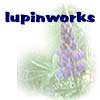SnippetsLeading From BehindGordon Wells in his book Meaning Makers (1986, Heinemann) describes the way in which children and adults (parents and teachers) collaborate to further children's language development. One idea he presents is how adults "lead from behind"—that is they modify their language based on the feedback they receive from their child language partners. He says:
Classroom teaching is the same—it requires that same supportive analysis and anticipation, the willingness on the part of the adult to "throw the ball gently so that it lands in the child's arms". What makes this challenging in a classroom of twenty-six or thirty-two students is that different children have different levels of ball-throwing skills! The trick is for the teacher to be able to quickly judge which students have enough skill to throw the ball with one another, which ones can "play" with the help of a more skilled partner, and which ones still need "the ball thrown gently and accurately..." by the adult. It's a complex collaboration which takes a lot of skill on the part of teachers. As Wells explains:
It starts with an invitation to explore something: where and how soccer balls are made today (in many third world countries using child labour!), why the war in Afganistan is proving so difficult (the history of Afganistan, its tribal roots, past failures to conquer the country...), chocolate bars (the ingredients and where they come from...), why sweaters are warm (where does heat come from, a comparison of wool and synthetic fibres,...). The list of topics is endless. Each topic allows an exploration using the tools of science, history, economics, language, ... it just depends on the current curricular focus. Once started, the students interests shape the investigation, the teacher follows along—leading from behind—with questions and suggestions about procedure, about new directions to explore, about ways of sharing findings, about production of presentations... Leading from behind is challenging—teachers have to trust students' ability to "make sense of their experience, to pose problems for themselves, and actively search for and achieve solutions." And they have to be able to improvise themselves, to see possibilities students haven't thought of themselves, and to match all of this active learning with the prescribed list of outcomes so that the formal curriculum objectives are being met—not in any prescriptive way, but as an indirect consequence of learning about something that interests the learners! |
|
© Copyright 2001-2009, . All rights reserved. |

